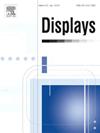基于人的表现评价灯光非视觉效果的理论模型:综合研究思路
IF 3.4
2区 工程技术
Q1 COMPUTER SCIENCE, HARDWARE & ARCHITECTURE
引用次数: 0
摘要
非视觉效应(Non-visual effects, NVE)是指光通过人体固有光敏性视网膜神经节细胞(ipRGCs)所产生的影响。这些影响包括不同的方面,包括昼夜节律、情绪调节、警惕性和工作效率。人的绩效包括心理感知、任务执行和生理效能。为了系统地研究NVE和HP之间的相互作用,必须建立一个全面的评估框架,该框架还可以为后续研究与NVE相关的定量方法描绘科学和清晰的技术途径。我们整理了照明NVE的研究现状,整合并分析了与这些效应相关的影响因素以及用于评估HP的维度指数,同时总结了研究非视觉(NV)影响的现有定量方法。基于这些回顾性分析,并通过提出未来的研究轨迹,我们最终开发了一个hp驱动的评估方法系统来评估NVE。该框架为即将开展的关于NV影响的多维评估方法的研究提供了理论基础,并指导了该领域未来的定量调查。本文章由计算机程序翻译,如有差异,请以英文原文为准。

A theoretical model for evaluation of non-visual effects of lighting based on human performance: Comprehensive research ideas
Non-visual effects (NVE) refer to the influence of light passing through human intrinsically photosensitive retinal ganglion cells (ipRGCs). These effects encompass various dimensions, including circadian rhythms, mood regulation, vigilance, and work efficiency. Human performance (HP) involves psychological perception, task execution, and physiological effectiveness. To systematically investigate the interplay between NVE and HP, it is essential to establish a comprehensive evaluation framework that can also delineate a scientific and clear technical pathway for subsequent research into quantitative methodologies related to NVE. We compile the current state of research on lighting’s NVE, integrating and analyzing the influencing factors associated with these effects alongside the dimensional indices used for evaluating HP while summarizing existing quantitative approaches to studying non-visual (NV) impacts. Based on these retrospective analyses and by proposing future research trajectories, we ultimately developed a HP-driven evaluation methodology system for assessing NVE. This framework provides a theoretical foundation for forthcoming studies focused on multi-dimensional evaluation methods concerning NV influences as well as guiding future quantitative investigations into this area.
求助全文
通过发布文献求助,成功后即可免费获取论文全文。
去求助
来源期刊

Displays
工程技术-工程:电子与电气
CiteScore
4.60
自引率
25.60%
发文量
138
审稿时长
92 days
期刊介绍:
Displays is the international journal covering the research and development of display technology, its effective presentation and perception of information, and applications and systems including display-human interface.
Technical papers on practical developments in Displays technology provide an effective channel to promote greater understanding and cross-fertilization across the diverse disciplines of the Displays community. Original research papers solving ergonomics issues at the display-human interface advance effective presentation of information. Tutorial papers covering fundamentals intended for display technologies and human factor engineers new to the field will also occasionally featured.
 求助内容:
求助内容: 应助结果提醒方式:
应助结果提醒方式:


